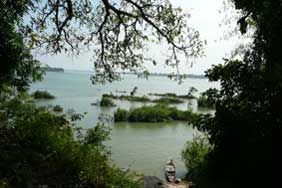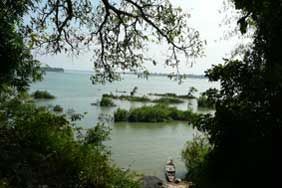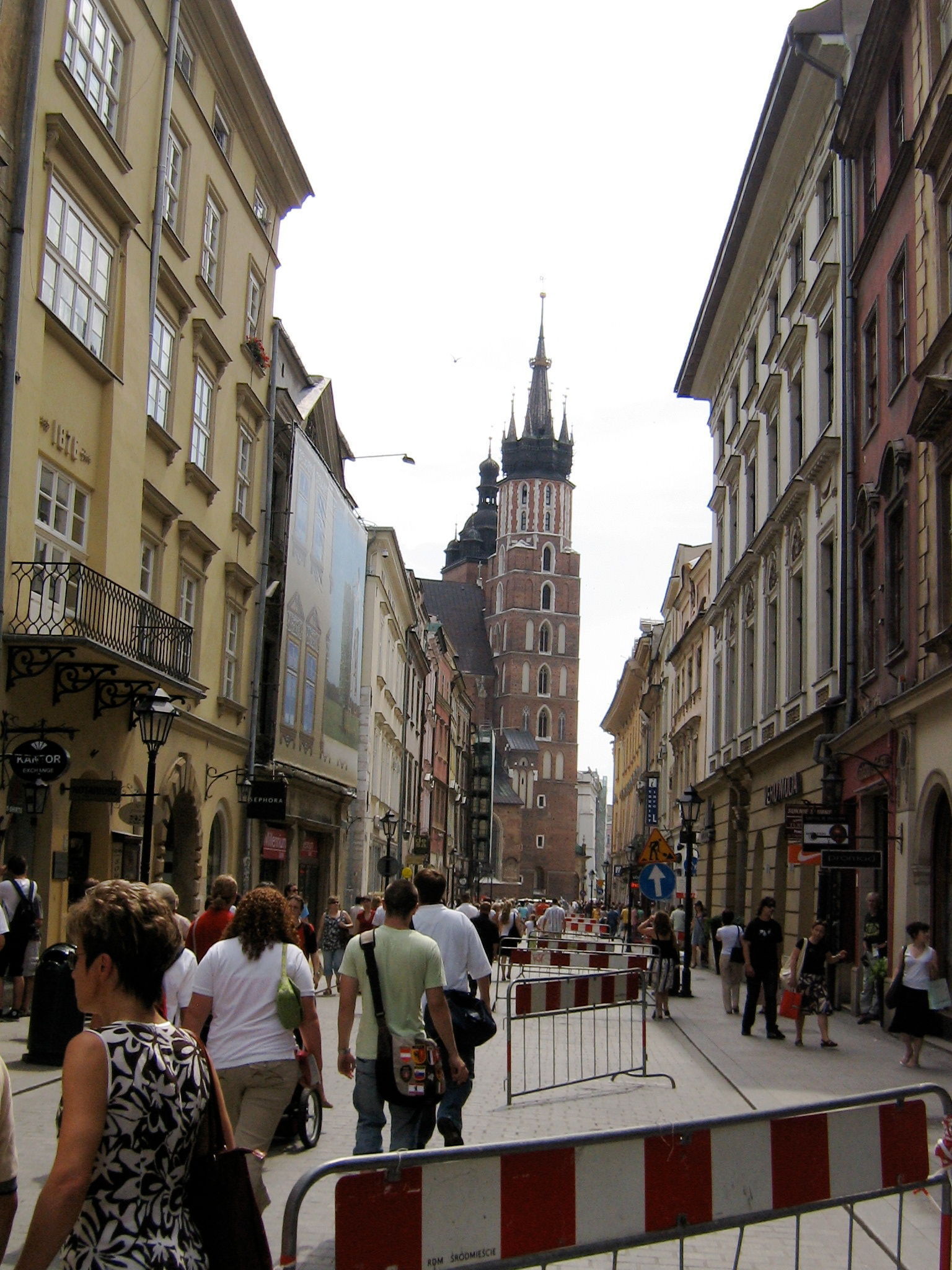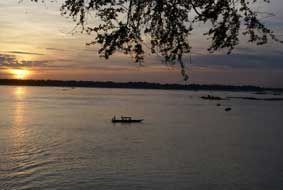A well planned network of hiking, biking and boating trails for all ability levels is helping promote ecotourism in the Mekong River region of northeastern Cambodia.
If you’re looking for something really off the beaten path, an extended journey along the new Mekong Discovery Trail in Cambodia will probably fit the bill. The Mekong River, the 12th longest in the world, is one of the world’s major rivers. Its river basin is second only to that of the Amazon in terms of biodiversity, with over 1200 species of fish. The region the 180km-long Discovery Trail runs through is home to one of the most threatened mammals in the world, the Mekong River Dolphin.
Through the establishment of the Mekong Discovery Trail, which links many local trails and was officially opened in June 2008, Cambodia hopes to promote awareness of the importance of protecting the Mekong for both the flora and fauna it supports, and the communities that live on its banks. Your visit to the region is a step in their goal to encourage ecotourism to the country.
How to Travel the Mekong
Once you arrive at the Mekong Discovery Trail in a remote part of northeastern Cambodia, the unusual opportunities the trail offers make the rather arduous trip worthwhile.
You and your adventurous, older family members (this isn't a trip for the very young) will have a number of different travel options along the trail itself. Motorbike taxis, local ferries, and boats are available for hire, or you can travel under your own steam by renting mountain bikes. With a mountain bike, you’ll be able to access areas of the trail not yet open to other traffic. Plus, you’ll be traveling the green way, without harming the environment or adding to greenhouse gases.
Biking is really a way to get farther off the beaten track -– some parts of the mountain bike trail are yet to be marked. It is advised to carefully plan out your trip, check out the maps and guides available online, and consider hiring a guide if you’re thinking of doing substantial bike travel along the Mekong.
However, among the major trails along the Mekong are local trails near towns in the provinces of Kratie and Stung Treng that are more accessible and provide many creature comforts.
Locally Marked Excursions from Kratie & Koh Trong
Using the town of Kratie as your base offers the chance to stroll downtown and check out the French colonial architecture. You can even rent a horse cart to tour the town if you wish. Kratie is famous for its Krolan, sticky rice mixed with coconut and beans cooked in tubes made of bamboo stalks. You can buy Krolan from the roadside stalls, which helps support the local community, one of the goals of the Discovery Trail.
Just across the water from Kratie is the island of Koh Trong, which offers the 9km Koh Trong Island Trail, accessible by bicycle. After taking a local ferry across and cycling around the island, you can enjoy one of the sandy beaches on the island’s banks. The trail passes various traditional houses built on stilts (in case of river flooding) and winds through picturesque orchards and rice fields.
A range of half-day and full-day trails leave from the Kratie town area, including a trail to 100 Pillar Wat, a Buddhist temple which actually has 116 pillars. The trail is 35km one way, so you can make arrangements to stay overnight with the monks who reside at the temple complex. Booklets and guides are available that explain the paintings within the temple.
Meet the Mekong River Dolphin
The best place to view Mekong River Dolphins is at Kampi village, about 15 km north of Kratie. The Dolphin Discovery Trail, part of the larger Mekong trail, leads directly there. If you enjoy bird watching, while viewing the dolphins keep an eye out for the Mekong Wagtail, a rare Cambodian bird species that can be found in this stretch of the river. Phnom Sambok, an ancient temple in between Kratie and Kampi, makes for a good stop on your way to or from viewing the dolphins.
At the river port of Stung Treng, you can take a ferry west across the river to check out the ancient temple ruins at Thala Barivat, built in the 7th century. You can also rent bicycles in town and explore some of the trails that leave from the town, one of which is the Koh Khan Din Trail, a full-day trail best traveled by bicycle. The trail heads north and offers a view of the merging of the Mekong and Sekong Rivers, and then passes through the village of Hang Koh Ban, famous for its sticky rice.
Farther north, closer to the Laos border, boat travel is the only option along the river, but there are some biking day trips if you head south, where you might spot more river dolphins and some wild whitewater rapids, as well as some trekking opportunities through the forests on the river’s banks.
If you travel north on Highway 7 by bus or motorbike, you’ll rejoin the Mekong River after about 55km, where you’ll be able to check out the village commune of Ou Svay, which offers hiking trails, bird watching, and some impressive waterfalls.
Details, Details
More information on the network of trails that make up the Mekong Discovery Trail is available at the Mekong Discovery website, where you can download itineraries and maps of the area, as well as read suggestions for making a positive impact through ecotourism to the region.
The isolated trail, located between the Cambodian province of Kratie and the border with Laos, takes some time to get to, as it’s located in one of the most natural and thus unpopulated areas of the Mekong.
From the south, those who arrive at Phnom Penh, the capital of Cambodia, are still 254km from the southern start of the trail, which then can be reached by bus, taxi, or rental car. Travelers approaching from the north can take one of the weekly flights into Pakse in southern Laos, and then the 187km to the northern end of the trail can be covered by bus or taxi.
A list of international airlines that service Cambodia is available at Cambodia’s Ministry of Tourism website.
When to go depends largely on the availability of your family to travel together. Cambodia, like the rest of Southeast Asia, has a climate dominated by monsoons. The southwestern monsoon, which heralds the rainy season, lasts from May to early October. The dry season lasts from November to April and brings less humidity but higher temperatures, as Cambodia lies entirely within the tropics. The best weather months to visit Cambodia are November, December, and January, as this is when the temperature and humidity are lowest and hiking and biking will be easiest.
For more general information about the country and accommodations, visit the Cambodia Ministry of Tourism online.
Dear Reader: This page may contain affiliate links which may earn a commission if you click through and make a purchase. Our independent journalism is not influenced by any advertiser or commercial initiative unless it is clearly marked as sponsored content. As travel products change, please be sure to reconfirm all details and stay up to date with current events to ensure a safe and successful trip.











